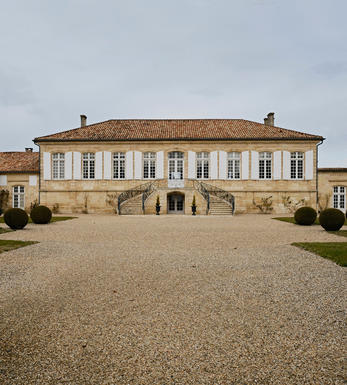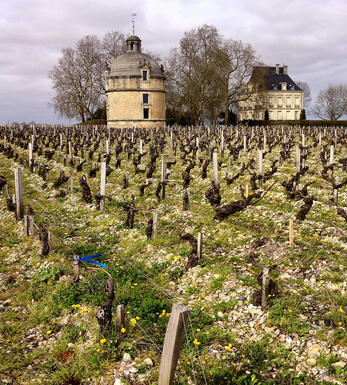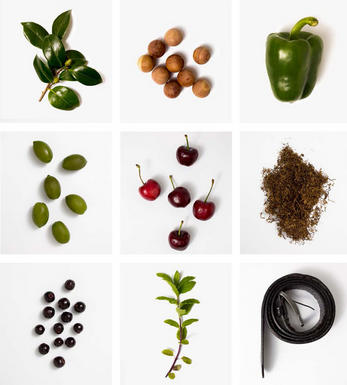
2007 Château La Lagune, Haut-Médoc, Bordeaux

Critics reviews
Neal Martin - 30/06/2017
About this WINE

Chateau La Lagune
Château La Lagune is a 3éme Cru Classé property that produces some of the finest wines in the Haut-Médoc AC. La Lagune's history dates back to 1715 when its handsome château was constructed. The vineyards were first planted in 1724.
La Lagune had hit hard times and fallen into disrepair when Georges Brunet bought it in 1954. He replanted the vineyards and totally renovated the chai. By the time he sold it to the Ayala Champagne firm in 1961, the property had been transformed.
La Lagune is the first property you pass driving out of Bordeaux on the Route de Vins. It is in fact only 15 kilometres from Bordeaux city. There are 72 hectares of vineyards planted with Cabernet Sauvignon (60%), Merlot (20%), Cabernet Franc (10%), and Petit Verdot (10%). The grapes are fermented in temperature-controlled, stainless steel tanks and the wine is then aged in oak barriques (70-80% new) for 15-18 months.

Haut-Medoc
Despite being as visually unprepossessing as the rest of the Médoc (despite its grandiose châteaux) this large red-wine appellation of Haut-Médoc is home to some of the world’s greatest wines. Its 4,500 hectares of vineyards form a largely continuous strip that follows the Gironde from St Seurin-de-Cadourne, just north of St Estèphe, to Blanquefort in the northern suburbs of Bordeaux.
All the great communes of the Left Bank fall within its boundaries: Margaux, St Julien, Pauillac and St Estèphe, as well as the up and coming Moulis and Listrac. These are labelled under their own, more illustrious and expensive appellation names. Châteaux labelled simply as Haut-Médoc rarely reach such heights, but nevertheless offer consistently good quality and offer some of the best value in Bordeaux.
Haut-Médoc wines tend to be firm and fine with generous fruit and a nice minerality – what many would consider ‘classic Claret’. They come from loftier vineyards and offer higher quality and more complexity than those labelled simply as ‘Médoc’. Almost all wines are a blend of the principal varieties – Cabernet Sauvignon, Merlot and Cabernet Franc – which helps producers hedge their bets if the slightly capricious climate causes one variety to fail. Small amounts of Petit Verdot, Malbec and even Carmenère are also used.
The higher proportion of sand and gravel to the south tends to produce finer wines, while the heavier clay and gravel north of Margaux yields sturdier examples. The best Haut-Médocs are found north of Ludon, a village just below Margaux. These include five classified Growths: Third Growth Ch. La Lagune, underperforming Fourth Growth Ch. la Tour Carnet and Fifth Growths Ch. Cantemerle, Ch. Camensac and Ch. Belgrave – as well as a number of fine Cru Bourgeois. Ageing ability varies but the lesser wines are usually delicious after three to four years, lasting around a decade, while the Cru Classés have a drinkability window of around six to 15 years.
Recommended Châteaux (labelled as Haut-Médoc): Ch. Beaumont, Ch. Belgrave, Ch. Cantemerle, Ch. Peyrabon

Cabernet Sauvignon
The most famous red wine grape in the world and one of the most widely planted.
It is adaptable to a wide range of soils, although it performs particularly well on well-drained, low-fertile soils. It has small, dusty, black-blue berries with thick skins that produce deeply coloured, full-bodied wines with notable tannins. Its spiritual home is the Médoc and Graves regions of Bordeaux where it thrives on the well-drained gravel-rich soils producing tannic wines with piercing blackcurrant fruits that develop complex cedarwood and cigar box nuances when fully mature.
The grape is widely planted in California where Cabernet Sauvignon based wines are distinguished by their rich mixture of cassis, mint, eucalyptus and vanilla oak. It is planted across Australia and with particular success in Coonawarra where it is suited to the famed Terra Rossa soil. In Italy barrique aged Cabernet Sauvignon is a key component in Super Tuscans such as Tignanello and Sassicaia, either on its own or as part of a blend with Sangiovese.


Buying options
Add to wishlist
Description
Tasted blind at Farr Vintners 2007 Bordeaux tasting. This is the best bottle of 2007 La Lagune that I have encountered. It has a refined bouquet with cedar wood and sandalwood infusing the rustic red berry fruit. The aromatics have plenty of charm. The palate is medium-bodied with gentle grip in the mouth, bitter red cherry and strawberry mixed with tobacco and cedar, leading to a pleasant, austere finish. I would not leave this a long time; drink now, not later. Tasted March 2015.
Neal Martin - 30/06/2017
wine at a glance
Delivery and quality guarantee